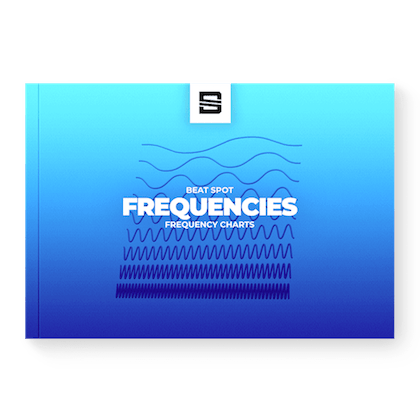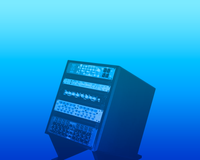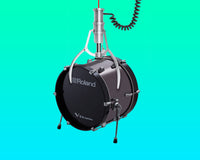Table of Contents
In this article, I’m listing the 10 best tips about stereo imaging that every producer/engineer should know, even producers that are not that much into mixing.
Knowing these pieces of info allows approaching stereo imaging more knowingly.
What is stereo imaging?
Stereo imaging refers to the aspect of sound recording and reproduction of stereophonic sound concerning the perceived spatial locations of the sound source(s), both laterally and in depth. Proper stereo imaging makes a mix open and alive, but it also guarantees efficient compatibility on mono systems.
Learn more about stereo imaging
If you want to learn more about how to control the stereo image (and much more), then you might be interested in our Panorama, Methods and Basics products.
The 10 best stereo imaging tips
Now let's go with the tips:

Mix in Mono
Let’s take this piece of advice with a grain of salt. Some people claim it’s the way to go, other people say it’s completely wrong.
Mixing in mono doesn’t mean keeping a mono-maker on the master all the time blindly.
You should keep a mono-maker on the master to check phase issues right from the start, instead of finding them later and trying to fix them while still maintaining the achieved sound.
Mixing in mono allows EQ’ing sounds so they fit together in the Mid channel nicely without any unexpected phase canceling.
The reason behind this trick is that if a mix sounds good in mono, it will most likely sound even better in stereo.

Headphones vs Monitors
There’s a significant difference between the two listening systems, and you should be aware of that when mixing.
Headphones allow listening through two separate pavilions which don’t interfere with each other, giving us the sense of more separation between the two sides of the stereo field.
Monitors, instead, diffuse the sound across the room and we perceive each monitor with both ears.
The easiest way to understand the difference between the two is by listening to a sound panned all the way to one side with both systems. While on headphones it might sound off since we’re perceiving it with only one ear, on monitors it will still be perceived as coming from the same side, but not as much hard-panned as on headphones.
While headphones are great at catching small nuances and reverbs, we still have to keep into account that it’s easy to get lost in microscopical panning and widening decisions when monitoring the mix through them.

Aim for Contrast
What makes a great stereo image is contrast. Having a good balance between narrow and wide elements is what makes a mix interesting. Also, automation can help with narrowing and widening the track throughout its length.

Narrow Down
It’s generally better to narrow down sounds, especially in crowded mixes. This way, you’re freeing up space across the stereo image and you can pan each element in a specific spot without having it to fight for that space with another sound.
An often-underestimated application of this technique is on reverb.

Pan with purpose
Don’t pan just for the sake of it. Use panning as a mixing tool so the frequency spectrum is balanced across the stereo image. If you have two instruments occupying the same frequency range, pan one to the right and the other to the left so you have the same kind of frequencies equally distant from the center and mirrored.

Use Auto-Pan
The power of automation can play a significant role in achieving a wide stereo image.
Having a sound hitting all the time in a specific spot can result quite boring, but having it move a little around its center position can add a layer of life to it, making the mix feel wider than what it actually is.

Haas Effect
Beware of using this effect. While it indeed makes sound wider, it comes at the cost of comb filtering, which results in a series of notches across the spectrum depending on the frequency content of the Haas’d source and the delay time applied.
If you want to use this effect, consider applying it in parallel and while listening to the source in mono. This way, you can find the delay time that creates the least harmful notches and also decide how much to “scale” it with parallel processing.
When applying the Haas effect, focus on delaying only one channel since what matters the most is the difference in time between the Left and Right signals.

Width across the Frequency Spectrum
A crucial factor involved in an optimal stereo image is controlling the width at each frequency range.
Most mixes appear to have a cone-shaped stereo image with lower frequencies being narrow or even mono and spreading up as we move towards higher frequencies.
This is because lower frequencies are omnidirectional, and also because it’s preferable to have those frequencies focused at the center of the mix to be the most efficient in terms of energy.
Another reason why you can keep higher frequencies wide is that there are fewer chances for them to cancel out.

Pitch Shifting
Pitch shifting is somewhat similar to the Haas effect with the difference that width is achieved through slightly different pitches rather than slightly different timings.
It’s basically how Chorus works. The difference in pitch is what keeps this effect from having comb filtering problems. This effect works wonders on pads, synths, and vocals.

Reverb
Reverb adds a layer of stereo width, and you can use it also for this purpose other than just the spatial perception of the input source. Consider widening or narrowing the reverb signal depending on the density of the mix, and also consider panning the reverb signal independently from the input source so you can take advantage of different spots in the stereo image other than creating cool spatial effects.
Beat Spot Mixing Tips
If you’ve found these tips helpful, then you’ll appreciate all the knowledge we’ve packed into Mixing Tips, our flagship PDF with a section dedicated to stereo imaging among a total of 13 chapters!









